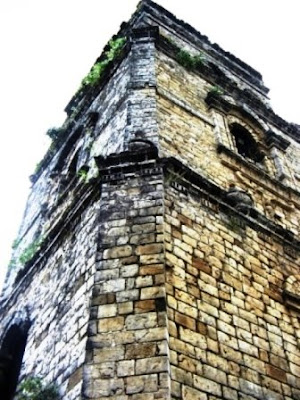.jpg) Facade of Paoay Church in Ilocos Norte (Photo taken using Liz's camera)
Facade of Paoay Church in Ilocos Norte (Photo taken using Liz's camera)After relaxing in Pagudpud, take time to visit several sights in Ilocos Norte and Ilocos Sur. We went to Paoay Church on our way home. According to www.waypoints.ph, it is a dream come true to be able to visit Paoay Church,the best known earthquake Baroque church in the Philippines which has been included in the UNESCO World Heritage list. The cornerstone of the church was laid by the Augustinian missionaries in 1704 while the cornerstone of the belfry was laid in 1793. The people already used it even before completion in 1894,but it was formally inaugurated on February 28,1896. It is said that large coral stones were used for the lower level of the church structure,and bricks were used for the upper levels. The walls which were made of coral blocks,tree sap,lumber and stucco-plastered bricks are 1.67 meters (more than 3 feet) thick,and are supported by 24 massive buttresses of intricate design.The church was partially destroyed twice by earthquakes in 1706 and 1927.In the restoration,permanent columns were built to support the ceiling. Today,this uniquely beautiful church still stands, wowing tourists with its majestic structure of Oriental,Gothic and Baroque influences.

Paoay Church's bell tower (Photo taken using Liz's camera)

Paoay Church bell tower (Photo taken using Liz's camera)
When you drive a couple of minutes, you may visit the moselium of Marcos and the Marcos Musuem.
On your way to Vigan, you will pass by Quirino Bridge that separates Ilocos Norte and Sur. It was breath taking. You may try their local empanada and my personal favorite Basi, not to mention the vigan longanisa and other local dishes. The Heritage Site in Crisologo Streets will always remind you of the lifestyle during the Spanish Era. You may also buy souvenirs and other delicacies made by the locals.
These cities have their own charm which you cannot find in our places. They managed to sustain development while maintaining the richness of their heritage. It’s worth the long drive.

.jpg)







No comments:
Post a Comment